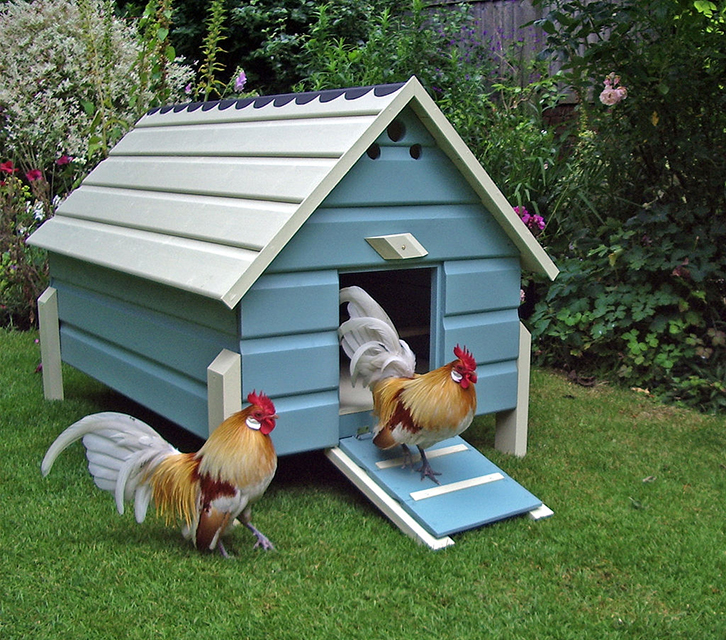Dutch Bantam Chickens
European articles indicate that the  bantams we know today as Dutch were first introduced into Holland by Dutch seamen
through trading of the East India Company from islands near Indonesia in the seventeenth
century. At the time, Bantam Island in the Dutch East Indies was a meeting point for
the trade routes between Asia and the western world. The native fowl of the regions
were used by the sailors as a source of meat and eggs during their voyages. At the
time it was common to call any small birds bantams regardless of whether they originated
from the Bantam islands or not.
bantams we know today as Dutch were first introduced into Holland by Dutch seamen
through trading of the East India Company from islands near Indonesia in the seventeenth
century. At the time, Bantam Island in the Dutch East Indies was a meeting point for
the trade routes between Asia and the western world. The native fowl of the regions
were used by the sailors as a source of meat and eggs during their voyages. At the
time it was common to call any small birds bantams regardless of whether they originated
from the Bantam islands or not.
The bantams most likely gained their popularity in early days as it was customary for the landlords of Europe to demand the larger eggs produced by their fowls of their tenants as rent. The smaller eggs of the bantams were used by the tenants for their own use.
Old Dutch paintings of farmyard scenes often included fowl of striking similarity to the appearance of present day Dutch bantams. A British painting of 1865 also depicts fowl of close resemblance to Dutch birds of today.
The Dutch Poultry Club first standardized the Dutch bantam in 1906, and today their standard recognizes over twenty varieties of the Dutch breed. The breed rapidly became very popular in Holland as it was possible to accomplish good conformity of type, color, comb and earlobes. Today the Dutch bantam is one of the most popular breeds in Holland, and is also a very popular breed in England.
Indications are that Dutch birds were first imported into this country shortly following World War II. Dutch bantams were first shown in this country in some of the larger eastern shows during the early 1950s. The Dutch bantam did not acquire the attention of the fanciers and therefore soon disappeared from the exhibition. Perhaps due to the lack of interest, it is believed that the breed was either lost, or bred into other breeds as they begun to lose their fertility.
Dutch bantams were again imported into this country in 1969 and 1970 into the Wisconsin area, and again in the 1980s into the Tennessee region. These importations are most certainly the ancestral lineage of the lines of Dutch presently being bred in both the United States and Canada.
As interest in Dutch bantams increased, several breeders in the southeast chartered the first breed club in August of 1986. The club was known as the American Dutch Bantam Society. The club and the breed has steadily grown and prospered during the late 80s and into the 90s. Several shows have had in excess of 100 bantams shown in the Dutch class. At present the Dutch club has over seventy members in most states and provinces. Some of the primary goals of the club are promotion, education and continued standard recognition of Dutch bantams in the standards of the A.B.A. and the A.P.A. The club prints a quarterly Newsletter to promote communication among the membership of the breed and the club.
Characteristics
Dutch bantams are hardy, active and lively, and should be first small, second of good type, and third of good color. These gentle and quaint little birds often display attachment to their owners and are characterized by their smallness and elegance. Dutch birds are good layers, good setters, and good broodies. Because of their small size, Dutch females are only capable of covering a small clutch of eggs.
Dutch bantams are very small birds with the male weighing less than 20 ounces and the female weighing less than 18 ounces. The head of both sexes are pronounced by a medium sized single comb, and by the presence of medium sized white earlobes that are almond shaped.
Males carry their bodies in a stately position in which the head is above their main body with a nice display of their breast region. The hackle and saddles are covered with flowing feathers that help to enhance their character and appearance. The tail is gracefully accented with long, cardioid curved sickle feathers that drape around their nicely spread tails. The females also carry their bodies with a statuesque display of head above the body and a nicely displayed breast. The tail should be nicely spread to accent their body.
Varieties
All varieties of Dutch bantams should have slate leg colors except for the Cuckoo and Crele varieties which have light legs which may have a few dark spots of color. The varieties of Dutch bantams that are most commonly found on this continent are:
- Light Brown
- Silver
- Blue Light Brown
- Blue Silver
- Blue Light Brown Splash
- Blue Silver Splash
- Black
- Cream Light Brown
- Blue
- Cream Blue Light Brown
- Blue Splash
- Cream Blue Light Brown Splash
- Self Blue
- White
- Golden
- Cuckoo
- Blue Golden
- Crele
References
American Dutch Bantam Society
- President, Gloria (Dusty) Miller, HC 67 Box 416, Ash Flat AR 72513, Phone: (870) 994-2477, Email: dustym@pokynet.com
- Secretary, Roy Schell, HC 65 Box 196, Wagarville, Alabama 36585 Phone: (334) 246-5810
